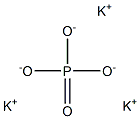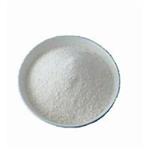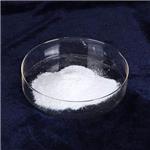Potassium phosphate is a reagent with high buffering capacity, It serves as a buffering agent to regulate pH, Typically used as a component for a wide variety of media used in the culture of microorganisms, as a component in phosphate buffered saline (PBS). It occurs in several forms: monobasic, dibasic, and tribasic (K3PO4). Most pH neutral potassium phosphate buffer solutions consist of mixtures of the monobasic and dibasic forms to varying degrees, depending on the desired pH. Gomori buffers, the most commonly used phosphate buffers, consist of a mixture of monobasic dihydrogen phosphate and dibasic monohydrogen phosphate. By varying the amount of each salt, a range of buffers can be prepared that buffer well between pH 5.8 and pH 8.0 (please see the tables below). Phosphates have a very high buffering capacity and are highly soluble in water.

Potassium phosphate is used as a fertilizer and food additive. It is also used in optical modulators and for non-linear optics such as second-harmonic generation (SHG). It is involved in the phase-transfer catalyzed preparation of acetylenes from the corresponding vicinal dibromo compounds through double dehydrobromination. It is also useful for the oxidative coupling of thiols to disulfide.
- Potassium phosphate is an acidity regulator and chelating agent (used to bind metal ions). It prevents desiccation and is used as an acid stabiliser in powders as well as to prevent formation of clumps. It increases the activity of antioxidants.
- In the food industry (Food additives), it is used as emulsifier, potassium fortifier, flavoring agent, meat binder. Potassium phosphate helps stabilize, thicken and regulate the acidity and moisture in foods. According to the provision of the FAO(1984), its application and limited amount is as below: instant broth; total phosphate salt: 1000 mg/kg (calculated based on P2O5); cooked pork forelegs, ham, cooked minced meat 3g/kg (single usage amount or combination amount with other phosphate, calculated on P2O5); low concentrated milk powder, condensed milk, dilute cream: 2 g/kg (single usage amount); combination amount with other stabilizer: 3 (calculated on anhydrous substance); milk powder, processed cheese: 5g/kg; processed cheese, the total amount of phosphate 9g/kg (calculated as phosphorus); cold drink: 2g/kg (single usage amount or combination amount with other phosphate, calculated on P2O5).
- It can be used for the preparation of pasta products with alkaline water.It can be used for the manufacture of liquid soap, high-quality paper, refined gasoline, high-quality paper, being the phosphorus and potassium fertilizers. It can be used as boiler water softener. Also used in medicine.Potassium phosphate is sometimes used as a medicine. It can have a diuretic effect and act as a laxative when used in medicinal amounts. However, phosphorus can interact with some medications, including corticosteroids and potassium-sparing diuretics, increasing the risk for adverse effects; only use it when advised to do so by a doctor.
- It can be used as analytical reagent, buffer and softener.
ADI 0 to 70 (calculate based on the total phosphate as phosphorus; FAO/WHO, 2001).
ADI 0 to 70 mg/kg (calculated as phosphorus, FAO/WHO, 1985). It is generally recognized as being safe (US Food and Drug Administration, 1985). According to the provision of the FAO(1984); instant broth; total phosphate salt: 1000 mg/kg (calculated based on P2O5); cooked pork forelegs, ham, cooked minced meat 3g/kg; low concentrated milk powder, condensed milk, dilute cream: 2 g/kg; milk powder, processed cheese: 5g/kg; processed cheese, the total amount of phosphate 9g/kg (calculated as phosphorus); cold drink: 2g/kg.
Phosphates are normal essential salts for the body. In view of the need to avoid calcium deficiency, their use is limited, as they bind up calcium readily. They have no side effects.
Colorless orthorhombic crystals; deliquescent; density 2.564 g/cm3at 17°C;melts at 1,380°C; very soluble in water, 90 g/100mL at 20°c; aqueous solutions strongly alkaline; insoluble in alcohol.
It is used as a buffering agent.
Potassium phosphate tribasic is a reagent with a very high buffering capacity. It is widely used in molecular biology, biochemistry, and chromatography, used for the extraction of keratohyalin protein from bovine tissue, to study the effects of freezing and thawing on the stability of proteins sensitive to conformational changes. It is used as a food additive for its properties as an emulsifier, foaming agent, and whipping agent.
Potassium phosphate tribasic has been used:
- in lysis buffer for the isolation of protein from Gram positive bacteria
- as a reagent for the scalable synthesis and post-modification of NU-1000 (mesoporous metal-organic framework)
- as a reagent for the plasma membrane preparation of Lilium davidii or Oryza sativa with high purity
ChEBI: Tripotassium phosphate is an inorganic potassium salt that is the tripotassium salt of phosphoric acid. It is an inorganic phosphate salt and an inorganic potassium salt.
The tribasic salt is produced by complete neutralization of phosphoric acid with potassium hydroxide, followed by evaporation and crystallization:H3PO4+ 3KOH →K3PO4+ 3H2O.
Potassium phosphate tribasic exhibits high catalytic property in trans esterification reactions. It has bactericidal activity.
Flammability and Explosibility
Not classified




